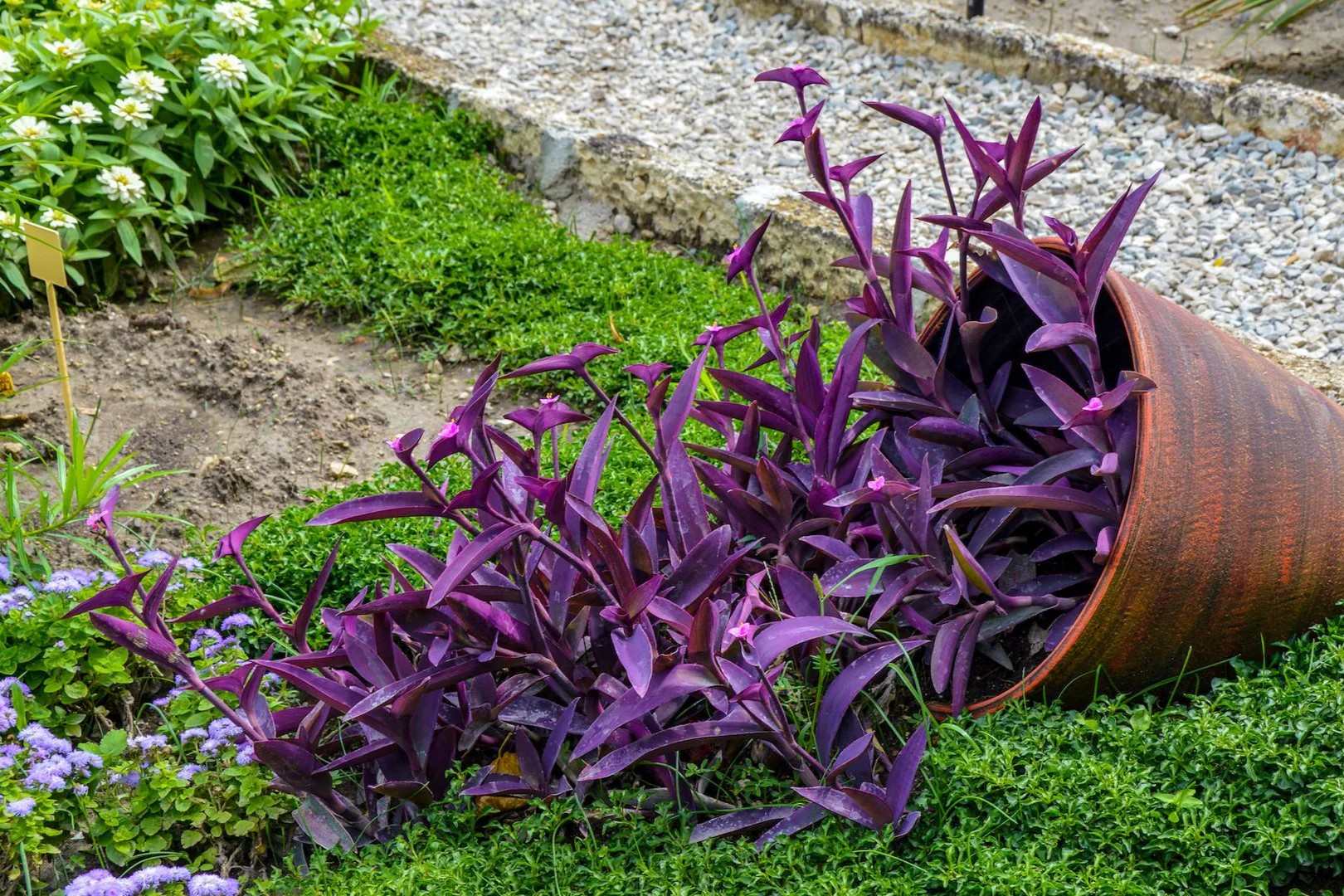
Tradescantia, often called spiderwort, is a fascinating plant with a rich history and unique characteristics. Did you know that this plant can thrive both indoors and outdoors? Its vibrant, three-petaled flowers come in shades of blue, purple, and white, making it a popular choice for gardens and homes. Interestingly, Tradescantia is named after John Tradescant, a 17th-century gardener and botanist. This resilient plant is also known for its ability to purify air, adding to its appeal. Whether you're a seasoned gardener or a plant newbie, learning about Tradescantia's quirks and care tips can be both fun and rewarding. Ready to dive into 28 intriguing facts about this versatile plant? Let's get started!
What is Tradescantia?
Tradescantia, also known as spiderwort, is a genus of plants native to the Americas. These plants are popular for their vibrant foliage and easy care. Here are some fascinating facts about Tradescantia that will make you appreciate this plant even more.
-
Tradescantia is named after John Tradescant, a 17th-century English gardener and botanist.
-
There are over 70 species of Tradescantia, each with unique characteristics.
-
Tradescantia plants are known for their colorful leaves, which can be green, purple, pink, or variegated.
-
These plants are often called "inch plants" because they grow quickly and can easily be propagated from cuttings.
Growing Conditions
Understanding the ideal growing conditions for Tradescantia can help ensure your plant thrives. Here are some key facts about their preferred environment.
-
Tradescantia prefers bright, indirect light but can tolerate low light conditions.
-
These plants thrive in well-draining soil to prevent root rot.
-
Tradescantia enjoys high humidity, making them perfect for bathrooms or kitchens.
-
They prefer temperatures between 60-80°F (15-27°C).
Watering and Maintenance
Proper watering and maintenance are crucial for keeping your Tradescantia healthy. Here are some tips to keep in mind.
-
Tradescantia should be watered when the top inch of soil feels dry.
-
Overwatering can lead to root rot, so it's important to let the soil dry out between waterings.
-
These plants benefit from regular misting to maintain humidity levels.
-
Pruning helps keep Tradescantia bushy and prevents legginess.
Propagation
Tradescantia is known for its ease of propagation, making it a favorite among plant enthusiasts. Here are some interesting facts about propagating this plant.
-
Tradescantia can be easily propagated through stem cuttings.
-
Place cuttings in water or directly in soil to encourage root growth.
-
Propagation is best done during the growing season, typically spring or summer.
-
Tradescantia cuttings can root within a week, making them one of the fastest plants to propagate.
Common Issues
Like any plant, Tradescantia can face some common issues. Knowing these can help you troubleshoot problems effectively.
-
Yellowing leaves can indicate overwatering or poor drainage.
-
Brown leaf tips may be a sign of low humidity or underwatering.
-
Pests like spider mites and aphids can affect Tradescantia, but they can be treated with insecticidal soap.
-
Leggy growth often results from insufficient light.
Benefits of Tradescantia
Tradescantia isn't just a pretty plant; it also offers several benefits. Here are some reasons to love this plant even more.
-
Tradescantia is known for its air-purifying qualities, helping to remove toxins from the air.
-
These plants are non-toxic to humans, making them safe for households with children.
-
Tradescantia can be used in hanging baskets, adding a touch of greenery to any space.
-
The vibrant foliage of Tradescantia can brighten up any room.
Fun Facts
Tradescantia has some quirky and fun facts that make it even more interesting. Here are a few to ponder.
-
Tradescantia flowers typically last only one day, but new blooms appear continuously during the flowering season.
-
The sap of Tradescantia can cause skin irritation in some people, so it's best to handle with care.
-
Tradescantia is sometimes called "wandering Jew," though this name is considered outdated and insensitive.
-
Some species of Tradescantia are used in traditional medicine for their anti-inflammatory properties.
The Final Word on Tradescantia
Tradescantia, often called spiderwort, is a fascinating plant with a rich history and unique characteristics. From its vibrant flowers to its easy care, it’s a favorite among gardeners and plant enthusiasts. This plant isn’t just pretty; it’s also tough, thriving in various conditions and requiring minimal maintenance. Whether you’re a seasoned gardener or a newbie, Tradescantia offers something for everyone. Its ability to purify air and its medicinal uses add to its appeal. So, if you’re looking to add a splash of color and a touch of resilience to your garden or home, Tradescantia is a fantastic choice. Dive into the world of spiderwort and discover the joy it brings. Happy planting!
Was this page helpful?
Our commitment to delivering trustworthy and engaging content is at the heart of what we do. Each fact on our site is contributed by real users like you, bringing a wealth of diverse insights and information. To ensure the highest standards of accuracy and reliability, our dedicated editors meticulously review each submission. This process guarantees that the facts we share are not only fascinating but also credible. Trust in our commitment to quality and authenticity as you explore and learn with us.
